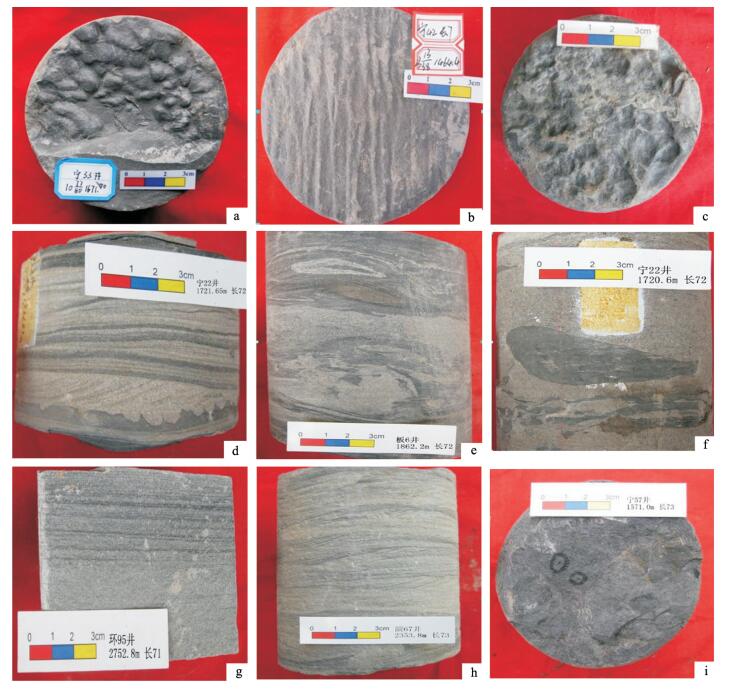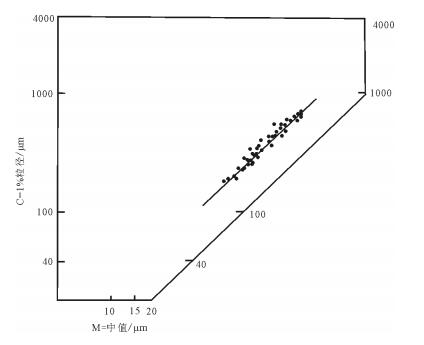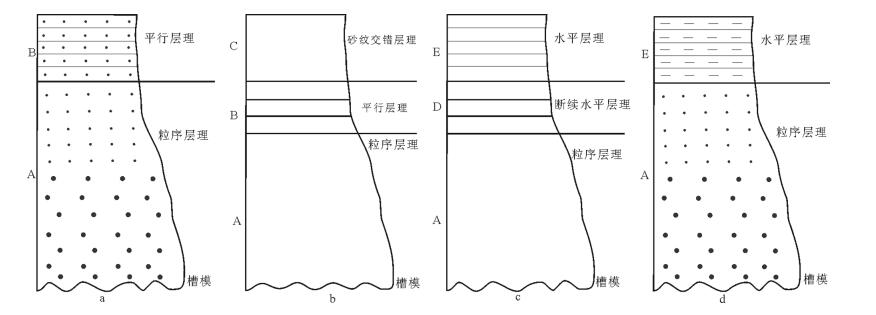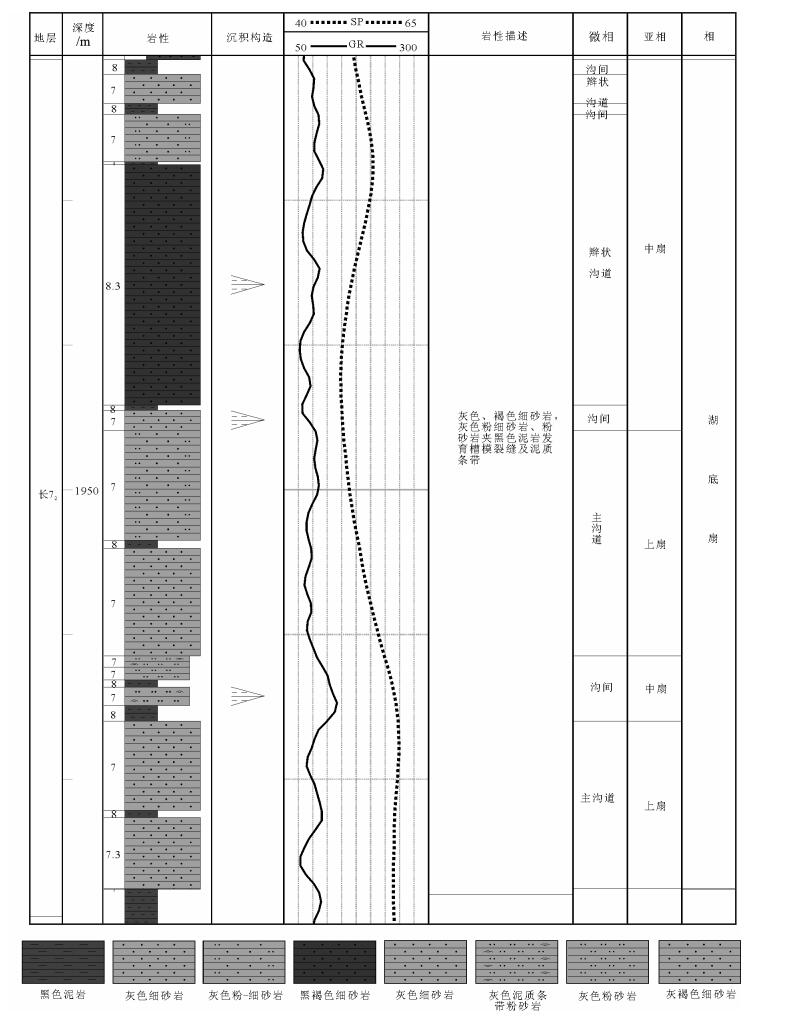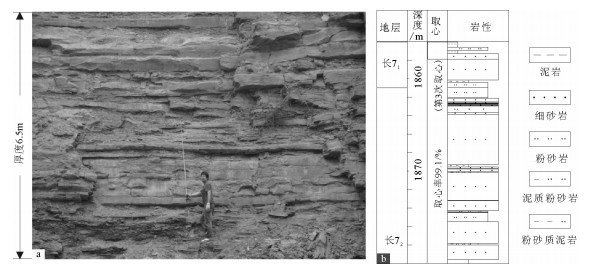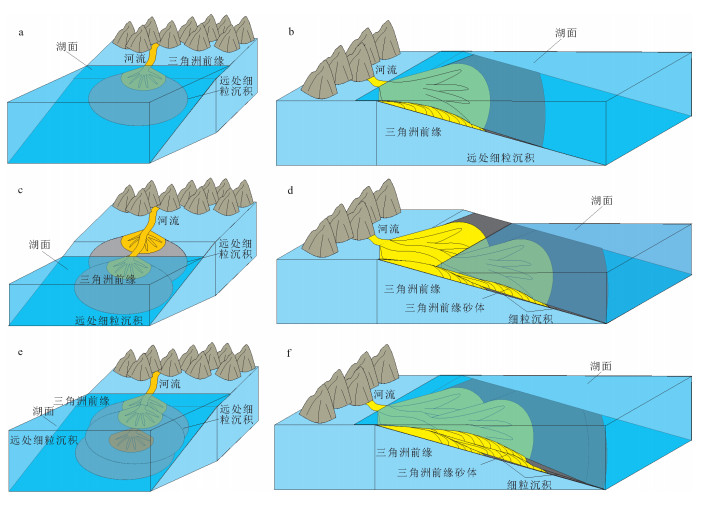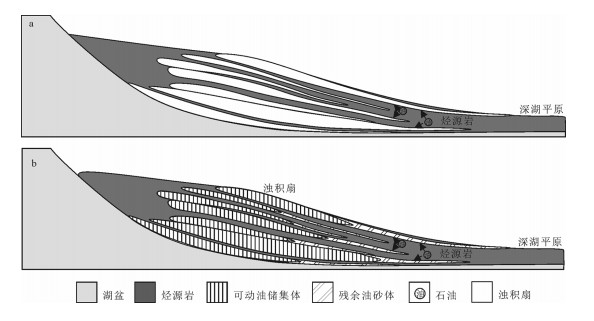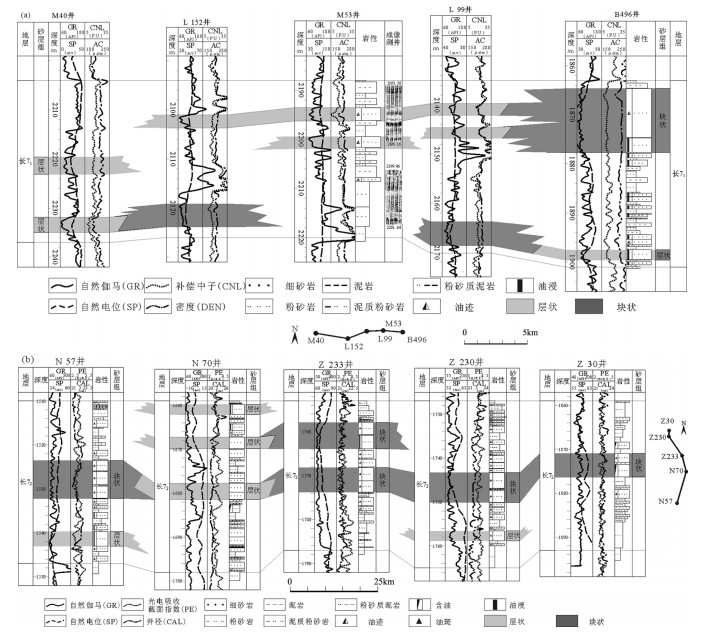Turbidite fan and its controlling effects on hydrocarbon accumulation in the Chang 7 Member of Triassic Yanchang Formation in Ordos Basin
-
摘要:
鄂尔多斯盆地三叠系延长组长7段为湖盆环境, 盆地深湖区以深湖泥岩沉积为背景, 普遍发育浊流沉积, 沉积范围广、厚度大, 近源的先天优势使其成为油气充注的最先储集单元。弄清浊积扇的沉积特征及不同微相形成的砂体对油气聚集具有重要意义。通过野外剖面分析与岩心观察统计, 对浊积扇微相进行精细划分, 明确浊积岩的形状、展布与沉积特征。根据前人研究成果, 将有固定补给水道的浊积扇和无固定补给水道的浊积扇划分为坡移浊积扇和滑塌浊积扇。通过单砂体厚度、浊积岩类型与发育位置的不同, 将坡移浊积扇划分为内扇、中扇、外扇3个亚相和主沟道、溢岸沉积等6个微相; 滑塌浊积扇相划分出中心扇和边缘扇2个亚相。浊积扇微相的划分及其成因的讨论能够指导测井对有利砂体的解释, 区分不同的油气储集体, 为寻找有利油气储层的分布提供依据。
Abstract:The sedimentary environment of the Chang 7 Member of Triassic Yanchang Formation in Ordos Basin is lacustrine facies with the background of large area mudstone deposition in the deep lake. The turbidity current deposits are widespread, and are char-acterized by extensive sedimentary range, large thickness, and proximal hydrocarbon source rocks. With these favorable factors, the Chang 7 Member has become the advantageous reservoir of oil. It is therefore necessary to find out the characteristics of sedimentary facies of the turbidite fan and sand bodies formed from different microfacies which affected the oil accumulation. Based on the analysis of the field outcrop and the core statistics, the authors divided turbidite fan microfacies in detail, which helps to study the turbidite formation, distribution, and sedimentary characteristics. According to previous research results, the channel turbidite fan with fixed supply and the channel turbidite fan with no fixed feeder were named respectively slope moving turbidite fan and slumping turbidite fan. On the basis of differences in thickness of single sand, turbidite types and formation locations, the authors divided the slope moving turbidite fan into three subfacies, i.e., upper fan, middle fan and the edge of the fan. The three subfacies contain six microfacies, such as the main channel and the overflow deposits. The slumping turbidite fan facies was divided into two subfacies, i.e., central fan and marginal fan. The recognition of microfacies of the turbidite fan and the study of their formation can help the log work to identify favorable sand body, distinguish different oil and gas reservoirs, and control the distribution of oil and gas. Massive texture sand body-and layers sand body help to find the favorable oil and gas reservoir.
-
20世纪五六十年代,人们大量发现并开始观察研究浊流,70年代,Middleton等[1]将浊流与碎屑流、颗粒流、液化沉积物流作为沉积物重力流的4种类型;Walker等[2-3]将浊积扇划分为上扇、中扇和下扇。一些学者开始对鄂尔多斯盆地内浊积岩进行研究。李文厚等[4]认为,西北地区湖相浊积岩主要是湖底扇浊积岩,并对岩相进行了划分,提出了内扇、中扇及外扇相组合;陈全红等[5]考虑到固定水道供给的问题,将浊积扇划分为坡移浊积扇和滑塌浊积扇及相应的沉积微相。本文在野外露头及岩心观察的基础上,着重研究了盆地西南部深湖区延长组长7段浊积岩的沉积特征、浊积岩相组合及相带在平面上的展布规律,并初步探讨了其成因机理(图 1)。
1. 区域地质背景
鄂尔多斯盆地是中国第二大陆相沉积盆地,在经历了早古生代浅海台地和晚古生代近海湖盆发育后,于中生代进入内陆湖盆的形成发展阶段[6]。晚三叠世延长期主要发育一套河流-湖泊为主体的陆源碎屑岩沉积体系,厚度达上千米。根据岩性、电性、含油性组合特征将延长组划分为10个油层组,自下而上分别为长10—长1油层组。经过长10期湖盆形成,长9期、长8期湖盆快速下沉后,在长7期达到鼎盛,沉积了厚层深湖相暗色泥岩、油页岩,即张家滩页岩,成为延长组重要的烃源岩。
近几年油气勘探逐渐由东北与西南方向三角洲沉积主体向深湖推进,在湖盆深水区钻遇多套厚度不等的浊积岩,使油气勘探由两大三角洲砂体发展到深水区浊积砂体。这些浊积岩与深湖相黑色泥岩组成良好的自生自储岩性油气藏[7], 已成为油气赋存的重要场所和勘探的重要领域。目前已发现的西峰、姬塬、镇原等油田储量达上亿吨[8]。在庆阳—庆城—合水一带的钻探井几乎均达到了工业油井的标准,如N30井日产油30t,L6井日产25t,T1、X233等井日产均在20t以上[9],具有良好的勘探前景。
2. 浊积岩特征
2.1 岩石学特征
湖泊浊积岩形成于半深湖、深湖环境,是三角洲前缘沉积物大规模滑塌的产物,主要受地形和补给的沉积物重力流性质的控制[10]。鄂尔多斯盆地延长组长7段浊积岩主要为薄-中厚层灰色、灰白色细砂岩、灰黑色粉砂岩、泥质粉砂岩夹灰黑色粉砂质泥岩及黑色泥岩、炭质泥岩,具有正粒序性和多期韵律性旋回的特点。岩石类型主要为岩屑长石砂岩,其次为长石岩屑砂岩、长石砂岩,成分成熟度较低,砂岩分选差-中等,磨圆度主要为次棱角状,具有快速沉积的特点。剖面上常见浊积岩夹于灰黑色及黑色泥岩和油页岩中,泥页岩中含较多的植物叶片化石,多已破碎,部分炭化,还可见介形虫及方鳞鱼鱼鳞化石(图版Ⅰ-i),少见或未见底栖动物化石,含黄铁矿,分布零散。
2.2 结构特征
浊积岩的结构特征主要体现在粒度分布上,由于浊流含大量泥、砂、砾石,是一种流速很快的高密度流,沉积物的搬运方式主要为悬浮搬运。浊流沉积碎屑颗粒粒径较小,一般集中分布在1~5cm之间,概率曲线为两段式,由跳跃总体和悬浮总体构成,滚动总体不发育。跳跃总体占55%~70%,悬浮总体占20%~30%,直线逐渐由陡变缓(图 2),反映浊流沉积过程中存在递变悬浮和整体沉降,较粗颗粒重力分异显著[11]。从C-M图解可知,浊流沉积物的样品点平行于C=M基线段分布,具有重力流沉积的特征,随着水动力减弱,C-M值系统地减少,反映了递变悬浮的特点(图 3)。
2.3 沉积构造
浊积岩的沉积构造较为发育,浊流层段自下而上发育粒序层理、平行层理、砂纹交错层理、水平层理及均质层理,即鲍马序列。序列中每段单元厚度变化较大,A段为递变粒序层理段,厚度一般小于30cm,岩性为含砾砂岩,具有下粗上细的正粒序性,砂砾岩层底面为冲刷面,与下部的泥岩呈截然接触,发育槽模、沟模等;B段发育平行层理,层理呈细层状、断续状,以细砂、中砂为主,夹泥质,厚度2~15cm;C段以粉砂岩为主,发育砂纹交错层理,并见包卷层理、泥质撕裂屑及滑塌构造,厚度小于10cm;D段主要为泥质粉砂岩、粉砂质泥岩,发育断续平行层理,厚度0.31~0.5mm;E段为深湖相泥页岩,发育水平层理,厚度一般为1~20cm。纵向上常见发育不完整的鲍马序列,主要层序组合有AB型、ABC型、ADE型、AE型及A段反复叠置(图 4)。
上述层段自下而上常见的沉积构造有以下几种:①底部构造,是浊流强烈的冲刷作用在下伏泥质沉积物表面形成的,常见的有槽模(图版Ⅰ-a)、沟模(图版Ⅰ-b)、锥模、刷模,是确定浊流沉积的重要标志之一;②同生变形构造,是湍流悬浮液和塑性、粘聚型的泥质相互作用形成的[5],主要有负载构造(重荷模)(图版Ⅰ-c)、火焰状构造(图Ⅰ-d)、包卷层理(图版Ⅰ-e)及泥质撕裂屑(图版Ⅰ-f);③层理发育,粒序层理是浊积岩的最基本特征,粒度细,横向具相变关系。平行层理由细砂岩组成(图版Ⅰ-g),砂纹交错层理多由粉砂岩段构成(图版Ⅰ-h),在缺少A、B段的情况下,底面可见槽模、沟模构造。水平层理主要出现在E段粉砂质泥岩、泥岩中。
3. 浊积岩相特征
根据沉积相的识别特征[12], 鄂尔多斯盆地西南部延长组长7段主要发育坡移浊积扇,可分为上扇亚相、中扇亚相及外扇亚相(表 1)。岩石类型主要为坡移浊积岩,是三角洲前缘的碎屑流、浊流、滑塌岩等重力流携带大量碎屑物质在深湖坡折带附近搬运过程中转化为浊流,在湖盆低洼处沉积形成的,因而浊积岩与毗邻的三角洲前缘水下分流河道砂体在成分及物源上具有一致性。
表 1 鄂尔多斯盆地西南部延长组湖底扇浊积岩相特征Table 1. Depositional characteristics of Yanchang Formation lake bed fan turbidites in southwestern Ordos Basin相 亚相 微相 单层砂厚/cm 浊积岩类型 发育位置 湖底扇 上扇 主沟道 > 100 泥砾砂岩、中砂岩、细砂岩、粉细砂岩具AB、AB序列和A、A、A、A序列 深湖线附近,湖底扇刚进人深湖的区域 溢岸沉积 < 1 细砂岩、粉砂岩、泥质粉砂岩、粉砂质泥岩组成BCDE和CDE序列典型浊积岩 中扇 辫状沟道 > 30 泥质细砂岩、细砂岩、粉细砂岩,粒序层理、冲刷构造和液体逃逸构造发育,具AB、AB序列和A、A、A、A序列 湖底扇向深湖的推进过稈中,上扇与深湖平原的过渡区 沟间 < 1 序层理、砂纹层理、波状层理,具BCDE和CDE序列典型 中心席 10〜30 细-粉砂岩、粉砂岩、泥质粉砂岩、粉砂质泥岩和泥岩不等厚互层,具ABCDE、BCDE和CDE序列典型浊积岩 外扇 末梢席 1〜10 粉砂岩、泥质粉砂岩、粉砂质泥岩和喑色泥岩不等厚互层,具CDE和DE序列的层状典型浊积岩 湖底扇最外缘的湖底平原 3.1 上扇
上扇靠近物源区,深湖线附近,是湖底扇的主水道发育区,可分为主沟道和溢岸沉积2类微相。主沟道主要由中-细砂岩构成,鲍马序列A段或AB段中-细砂岩韵律性重复出现,单砂厚度一般大于1m,叠积砂体厚度可达10m以上,单层厚度大,横向厚度变化较快,呈透镜状产出,分选、磨圆较差(图 5)。溢岸沉积中多出现侧向不连续的CDE段或DE段组合,多为湍流漫溢形成的粉-细砂岩、泥岩。上扇完整的垂向序列表现为,底部与深水泥岩呈冲刷接触,普遍见有沟模、槽模等,冲刷面之上常见泥砾层,向上为厚度较大的含泥砾砂岩层,依次发育粒序层理、平行层理,并伴随滑塌构造,上部为厚度不大、具水平波状层理或沙纹层理的泥质粉砂岩和粉砂质页岩。
3.2 中扇
中扇发育在湖底扇向深湖推进过程中上扇与深湖平原的过渡区,分布范围更广,包括的微相有辫状沟道、沟间和中心席(图 5)。辫状沟道与上扇主沟道相接,向下分支成一系列分流水道。岩性组合类型为含泥砾砂岩和进积浊积岩,夹薄层灰色、深灰色粉砂质泥岩及泥岩,垂向层序呈明显的正韵律性,多期形成的鲍玛序列A段和AB段相互叠置,构成叠合砂岩体,偶见完整的鲍马序列,单砂体厚度一般大于30cm,砂体叠置厚度几十厘米至十余米不等,在沟道底部冲刷面构造清晰,常见较多泥砾。砂岩一般呈透镜状,各种层理均发育,具粒序层理、平行层理、中小型交错层理,细砂岩及粉砂岩中偶见生物化石碎片及植物炭屑。自然伽马曲线呈齿化或微齿箱型、钟型、箱型组合、指型等,幅度以中等为主。
沟间位于辫状沟道之间,岩石类型主要为不规则薄互层的细砂岩、粉细砂岩、粉砂岩、泥质粉砂岩和泥岩,发育沙纹层理、平行层理、变形层理等,并见泥岩撕裂屑、砂质条带等。鲍玛序列的组合主要为BCDE段、CDE段或DE段组合。粉砂岩及泥岩中见植物炭屑。沟间沉积厚度较小,单层砂厚度小于1cm,在垂向和平面上均分布于辫状沟道之间。
中心席位于辫状沟道的前方,通常与辫状沟道呈逐渐过渡关系。岩石类型主要为粉砂岩、粉砂质泥岩和泥岩,砂体厚度10~30cm,含植物炭屑。鲍玛序列以BCDE段、CDE段及DE段组合为主。粒度概率曲线多为一段式,部分二段式,表现出悬浮组分含量高的特点。自然电位曲线呈中-低幅指型、微齿泥岩基线等。
3.3 外扇
外扇通常发育在湖底扇最外缘的湖底平原,分布在凹陷最深的部位,最常见末梢席微相。岩相组合类型为粉砂岩、泥质粉砂岩、粉砂质泥岩和深湖相暗色泥岩互层,单层砂厚度为1~10cm,岩层中可见植物炭屑。多见沙纹交错层理、水平层理、韵律层理等,在垂向上与暗色泥岩构成鲍玛序列的CDE段及DE段组合。
4. 浊积岩相平面展布特征及成因模式
4.1 沉积相平面展布规律
长8期末,盆地西缘、西南缘的逆冲作用导致湖盆整体剧烈沉降[13], 长73湖盆达到鼎盛,面积约10×104km2,广泛沉积了张家滩页岩。深湖区开始发育浊流沉积,主要分布在盆地西南部及华池—庆城一带。但由于物源供应有限,单个浊积岩体规模较小,分布零星。长73期后,湖侵作用减弱,湖盆开始萎缩,东北部深湖线大致沿吴起—定边—王盘山—古峰庄一线展布,西南部深湖线沿环县—镇原—宁县一线展布(图 6)。湖盆中心位于姬塬—华池—黄陵一带,半深湖-深湖浊积体规模扩大,砂厚约为20~50m,砂地比30%~70%,局部地区砂厚可以达到60m以上,砂地比超过80%。平面上,浊积砂体主要分布在合水—庆阳—正宁一带及东北部姬塬—吴起—南梁附近,其中西南部的浊积砂体规模较大,延伸较远,在华池—庆城—合水一带逐渐会合,连片展布。
4.2 浊积岩成因模式
鄂尔多斯盆地西南部长7期浊积岩的发育及分布受到多种因素的制约。首先,湖盆地形控制着浊积体的分布位置、形态、大小,是浊积岩形成的前提条件。晚三叠世,整个湖盆具有东北宽缓、西南陡倾的特点,厚层块状浊积岩主要发育在坡度较陡的西南辫状三角洲及西缘扇三角洲前端,而华池以东地区坡度较缓,浊积岩不发育。
其次,物源稳定。长7中晚期—长6期,研究区主要处于半深湖-深湖环境,湖盆逐渐萎缩导致湖水面下降,侵蚀基准面随之降低,源区剥蚀作用增强。湖盆附近的辫状河三角洲、曲流河三角洲及扇三角洲平原的水流搬运细粒碎屑物入湖,大量碎屑物质堆积在三角洲前缘,并不断向前加积[14]。此时由于沉积物卸载速率快,压实沉陷作用强,产生高孔隙流体压力,稳定性差,砂体在三角洲前缘斜坡坡角处向前滑塌,并向洼陷方向推挤下部泥岩并使之液化。在重力作用下,液化流沿斜坡的下坡方向运移和沉积,形成连续相或孤立的浊积砂体,在缓坡区和湖盆低洼处沉积,多期砂体纵横向复合叠加,形成大规模浊积扇群。
构造活动与浊积岩的发育也有密切关系。在铜川烈桥、宜川仕望河、延长延河剖面的长7油页岩中均发现多层泥质凝灰岩,在岩心观察中也发现浊流沉积物中夹有多层凝灰岩薄层。夹层单层厚度2mm~40cm不等,分布范围广,其中长73、长63底部的凝灰质夹层厚度达50~180cm。测井曲线特征明显,具有自然电位偏正、高自然伽马、低电阻,井径有明显扩径、高声波时差的特征,反映盆地周缘火山活动频繁。岩心中见到竹叶状泥质撕裂屑成层性浮于砂质沉积物中,指示强烈的搅浑作用,同时见到大量与地震活动相关的阶梯状正断层、地裂缝、微褶皱纹理、揉皱变形构造及砂岩脉体。三角洲前缘不规则朵体在地震活动引起的震动下发生断裂,不稳定的前缘沉积物在重力作用下顺坡滑动,引发了湍流运动,形成向上分力支撑的悬浮状态,并与上面水体产生密度差,碎屑物质通过三角洲前缘坡折带继续向盆地内部流动[15]。由于深湖区地形平缓,湍流强度减弱,在重力分异作用下沉积物先后发生沉降,形成浊积岩。
5. 结论与认识
(1)鄂尔多斯盆地长7段浊积岩主要为一套灰色、灰白色细砂岩、灰黑色粉砂岩、泥质粉砂岩夹灰黑色粉砂质泥岩及黑色泥岩,成分成熟度低,分选较差,为快速沉积的产物,粒度分布、测井曲线等具有典型的浊流沉积的特征。
(2)具有浊积岩标志性的沉积构造,主要发育底部构造、同生变形构造及粒序层理、平行层理、砂纹交错层理及水平层理,纵向上鲍马序列常见AB型、ABC型、ADE型、AE型等不完整的层序组合。
(3)研究区长7段浊积扇主要为坡移浊积扇,可分为上扇、中扇及外扇亚相及主沟道、辫状沟道、沟间、中心席等主要的沉积微相,其中中扇是浊积扇的主体,厚度较大。平面上,浊积砂体主要分布在合水—庆阳—正宁一带及东北部姬塬—吴起—南梁附近。受湖盆地形、物源及构造活动的影响,西南部浊积扇较东北部更为发育。
-
表 1 鄂尔多斯湖底浊积扇分类及特征
Table 1 Classification and characteristics of sub-lacustrine turbidite fan in Ordos Basin

表 2 砂体结构判别标准
Table 2 The discrimination standard of sand body structure
类型 岩心识别标准 测井识别标准 块状结构砂体 ①单砂体大于5m;
②有多个单砂体且厚度大于2m(工业生产下限),夹层厚度小于1m,累加厚度大于5m时低自然伽马、自然电位负异常、低声波时差、低补偿中子、低光电截面指数、高密度、缩径的特征,曲线形态呈现箱型、微齿化的箱型及钟型特征 层状结构砂体 ①单砂体大于2m且小于5m;
②有多个单砂体且厚度大于1.5m,夹层厚度小于1m时,累加厚度仍小于5m低自然伽马,自然电位负异常,低声波时差,低补偿中子,低光电截面指数,高密度,缩径的特征;曲线形态呈现钟型、微齿化的钟型、指型及漏斗型特征 -
陈全红, 李文厚, 郭艳琴, 等.鄂尔多斯盆地南部延长组浊积岩体系及油气勘探意义[J].地质学报, 2006, 80(5):656-663. 杨华, 窦伟坦, 刘显阳, 等.鄂尔多斯盆地三叠系延长组长7沉积相分析[J].沉积学报, 2010, 28(2):254-263. 潘树新.大型坳陷湖盆深水重力流研究——以松辽盆地青山口组为例[D].成都理工大学博士学位论文, 2012. Walker R G. Deep-water sandstone facies and ancient submarine fans:models for exploration for stratigraphic traps[J]. AAPG Bulletin, 1978,62(6):932-966. Walker R G. Deep-water sandstone facies and ancient submarine fans:models for exploration for stratigraphic traps[J]. AAPG Bulletin, 1978, 62(6):932-966.
Middleton G V, Hampton M A. Sediment-gravity flows:Mechanics of flow and deposition[C]//Middleton G V, Bouma A H. Turbi-dites and Deep-Water Sedimentation:Short Course Lecture Notes, Part Ⅰ. California:LosAngeles, 1973:1-38. Middleton G V, Hampton M A. Sediment-gravity flows:Mechanics of flow and deposition[C]//Middleton G V, Bouma A H. Turbi-dites and Deep-Water Sedimentation:Short Course Lecture Notes, PartⅠ. California:LosAngeles, 1973:1-38.
Middleton G V,Hampton M A. Subaqueous sediment transport and deposition by sediment gravity flows[C]//Stanley D J,Swift D J P. Marine Sediment Transport and Environmental Management. Wiley, New York, 1976:197-218. Middleton G V, Hampton M A. Subaqueous sediment transport and deposition by sediment gravity flows[C]//Stanley D J, Swift D J P. Marine Sediment Transport and Environmental Management. Wiley, New York, 1976:197-218.
Bouma A H. Sedimentology of some flysch deposits:A graphic approach to facies interpretation[M]. Amsterdam:Elsevier,1962:168. Bouma A H. Sedimentology of some flysch deposits:A graphic approach to facies interpretation[M]. Amsterdam:Elsevier, 1962:168.
Shanmugam G. Ten turbidite myths[J]. Earth-Science Reviews, 2002, 58:311-341. Shanmugam G. Ten turbidite myths[J]. Earth-Science Reviews, 2002, 58:311-341.
Shanmugam G. High-density turbidity currents:Are they sandy debris flows?[J]. Journal of Sedimentary Research, 1996, 66:2-10. Shanmugam G. High-density turbidity currents:Are they sandy debris flows?[J]. Journal of Sedimentary Research, 1996, 66:2-10.
杨华.鄂尔多斯盆地三叠系延长组沉积体系及含油性研究[D].成都理工大学博士学位论文, 2004. 于兴河, 李胜利.碎屑岩系油气储层沉积学的发展历程与热点问题思考[J].沉积学报, 2009, 27(5):887-892. 于兴河.油田开发中后期储层面临的问题与基于沉积成因的地质表征方法[J].地学前缘, 2012, 19(2):1-13. 罗蛰潭, 王允诚.油气储集层的孔隙结构[M].北京:科学出版社, 1986:21-43. 高潮.低渗储集体的形成演化及其对油藏分布的影响——以鄂尔多斯盆地张一韩地区为例[D].西北大学博士学位论文, 2011.



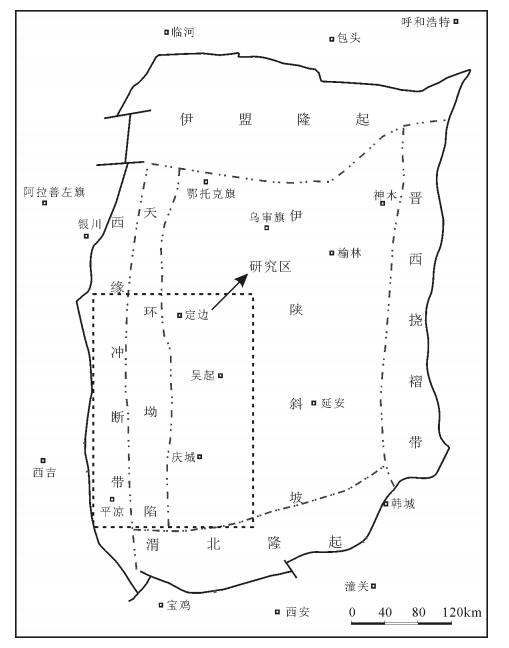
 下载:
下载:
